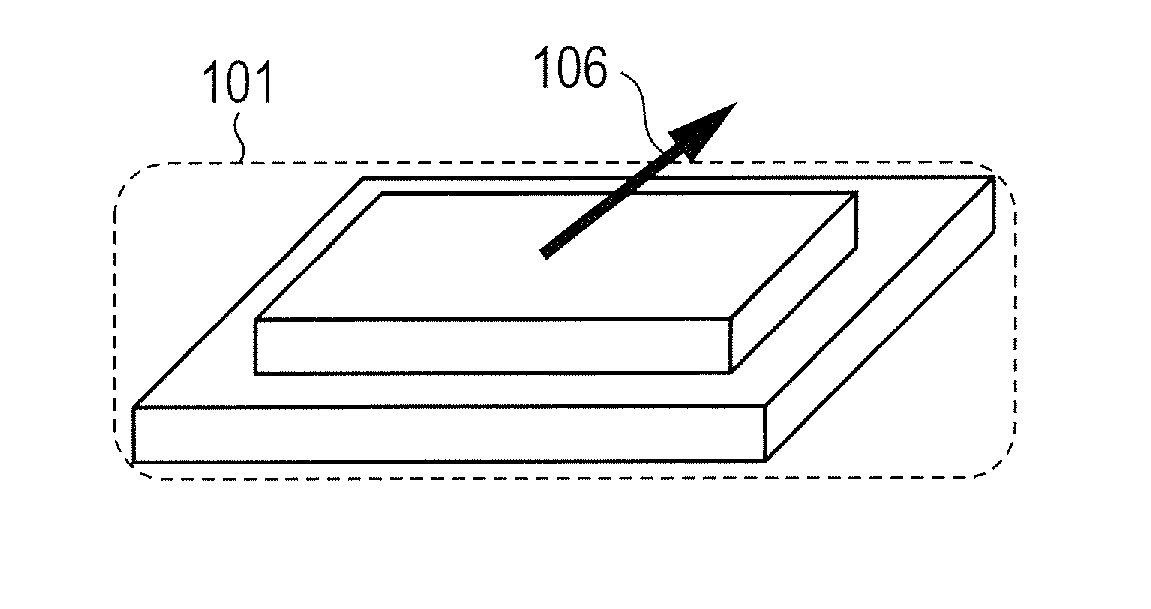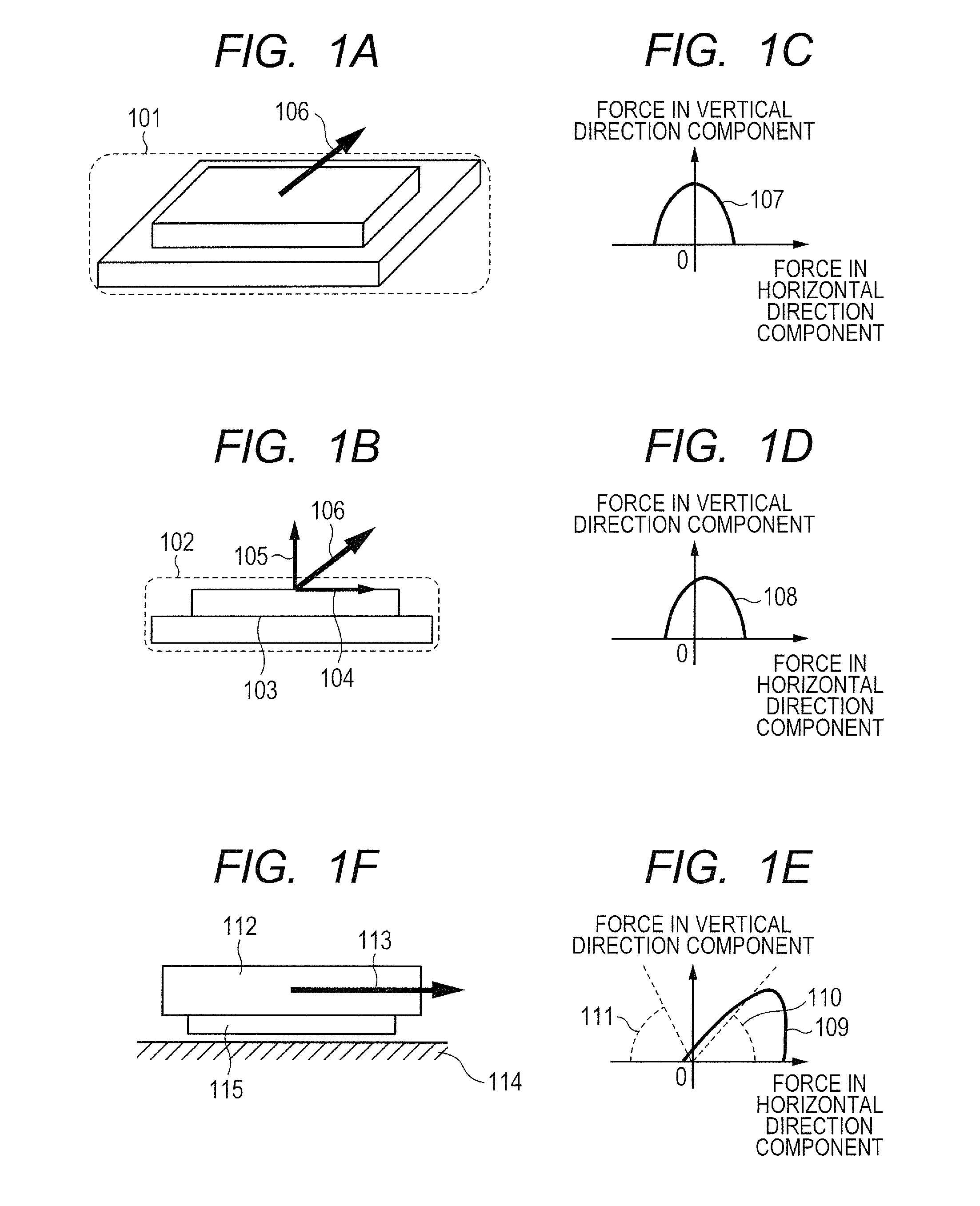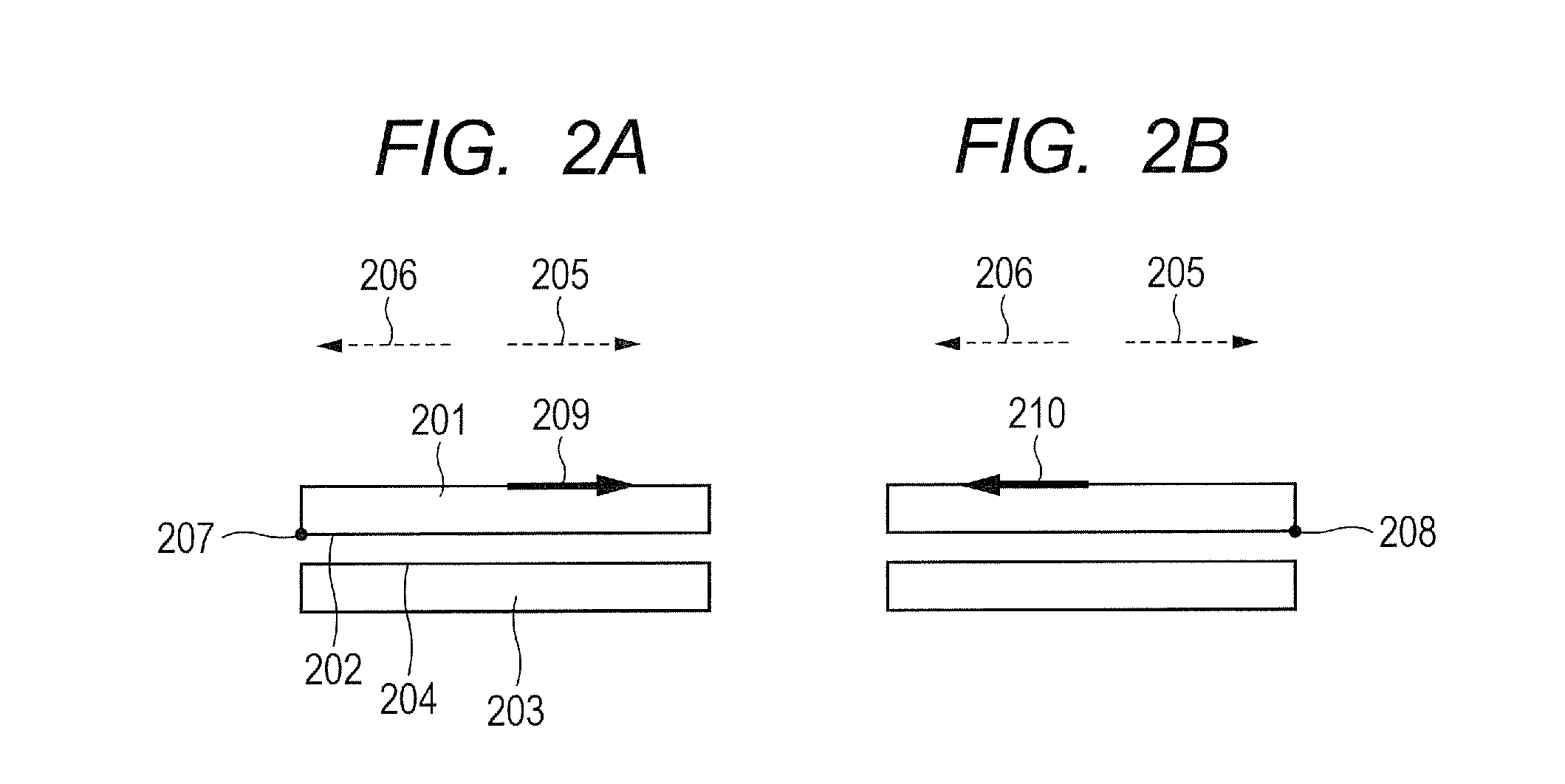Adhesive member
a technology of adhesive members and columns, applied in the direction of adhesives, film/foil adhesives, etc., can solve the problems of a large amount of time and labor, and the ability to produce the array of columns of adhesive members, and achieve the effect of strong directional dependen
- Summary
- Abstract
- Description
- Claims
- Application Information
AI Technical Summary
Benefits of technology
Problems solved by technology
Method used
Image
Examples
example 1
[0120]Prior to the description of a construction example of an adhesive member, an example of a method of calculating a strain energy release rate through a simulation, and an example of a method of calculating an adhesion profile through a simulation are described.
[0121]
[0122]For example, a strain energy release rate at a peeling site of the adhesive member can be determined by the same approach as a virtual crack extension method in fracture mechanics (hereinafter referred to as “virtual peeling extension method”). The surface force and relative displacement of a virtual peeling portion to be used in the virtual peeling extension method are determined by, for example, structural analysis based on a boundary element method. Somigliana's boundary integral equation is used as an integral equation, and Rongved's solution serving as a fundamental solution for a two-phase conjugate is used as a fundamental solution. The use of the fundamental solution eliminates the need for the arrange...
example 2
[0132]In Examples and Reference Examples below, the strength of the directional dependency of the adhesive force of an adhesive member and its adhesion profile are described. First, peeling sites were estimated by performing simple stress analysis before detailed analysis of the adhesive force. In each case, a first peeling site (1203) may be considered to be the end portion of the adhesive surface of an adhesive member (1205) in a second direction (1202), and a second peeling site (1204) may be considered to be the end portion of the adhesive surface in a first direction (1201) (FIG. 12A to FIG. 12F). A construction in which the adhesive member includes a plurality of protruding portions configured to adhere to an adherend and a substrate portion is, for example, a construction in which the adhesive member (1205) of each of FIG. 12A to FIG. 12F has the plurality of protruding portions in its lower portion. When the protruding portions are isotropic in a plane parallel to the adhesi...
reference example 1
Analysis of Adhesion Profile when Horizontal Sectional Shape is Asymmetrized
[0136]An analysis model shape is illustrated in FIG. 12B. The shape of the adhesive member (1205) was a triangular prism shape whose horizontal section was an isosceles triangle having a base of 10 cm and a height of 10 cm, the shape having a height of 10 cm, and its elastic modulus and Poisson's ratio were set to 0.29 MPa and 0.45, respectively. In addition, the elastic modulus and Poisson's ratio of the adherend were set to 80 GPa and 0.21, respectively, and the shape of the adherend (1206) at the time of its structural analysis was a triangular prism shape whose section was an isosceles triangle having a base of 11 cm and a height of 11 cm, the shape having a height of 2 cm. The first direction (1201) is a direction vertical to the base of the horizontal section and directed toward the apex of the isosceles triangle. An adhesive energy between the adhesive member and the adherend was uniform over the enti...
PUM
 Login to View More
Login to View More Abstract
Description
Claims
Application Information
 Login to View More
Login to View More - R&D
- Intellectual Property
- Life Sciences
- Materials
- Tech Scout
- Unparalleled Data Quality
- Higher Quality Content
- 60% Fewer Hallucinations
Browse by: Latest US Patents, China's latest patents, Technical Efficacy Thesaurus, Application Domain, Technology Topic, Popular Technical Reports.
© 2025 PatSnap. All rights reserved.Legal|Privacy policy|Modern Slavery Act Transparency Statement|Sitemap|About US| Contact US: help@patsnap.com



